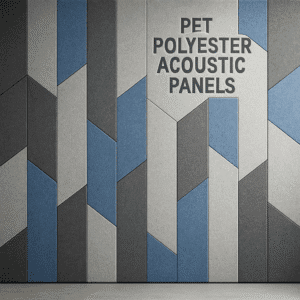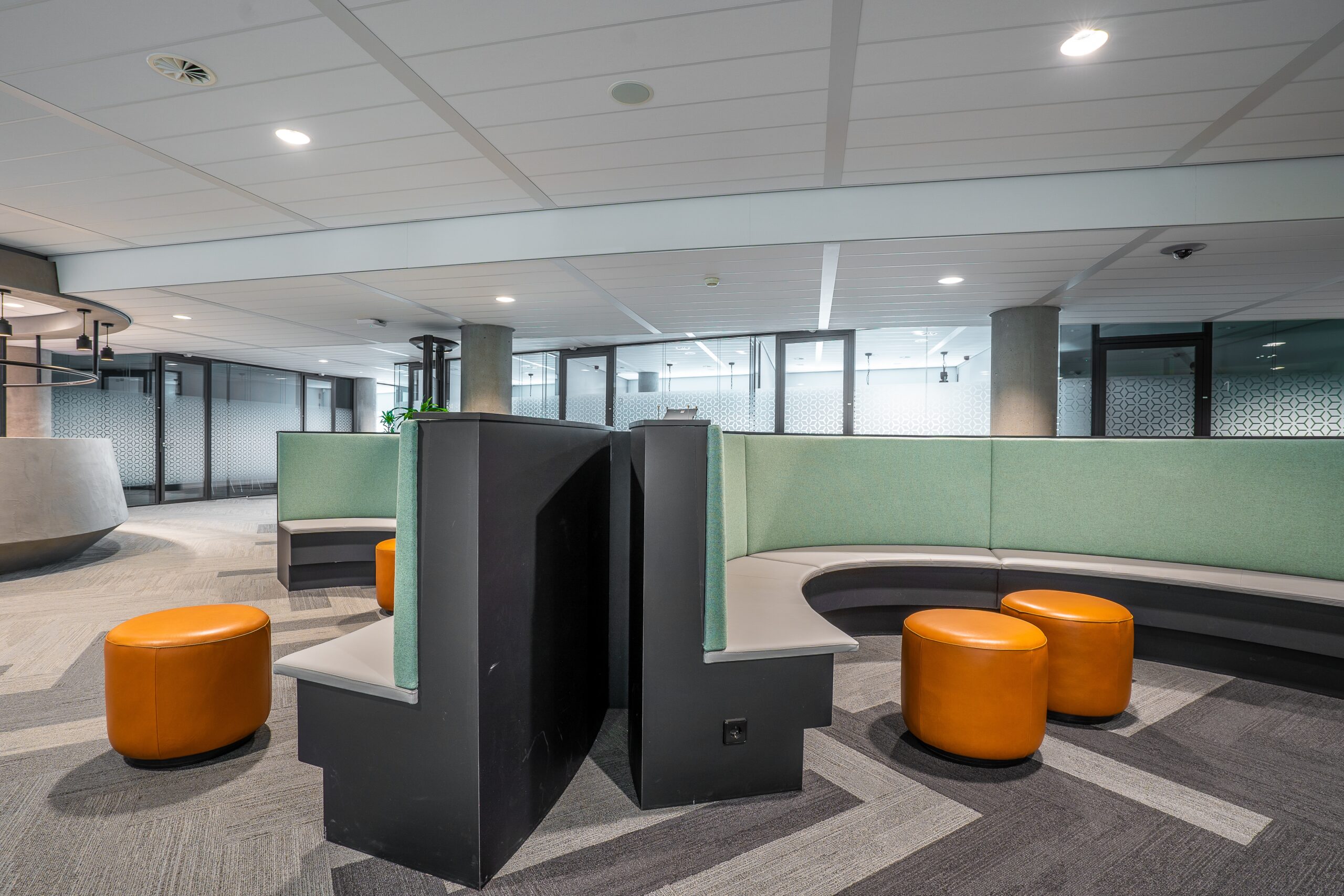In the age of sensory engagement, design is no longer just a visual experience—it’s increasingly becoming tactile. One of the most exciting materials redefining interior acoustics and aesthetics is the Polyester Acoustic Board. As architects and designers push boundaries to create immersive environments, these boards are emerging as both functional and artistic elements that appeal to the sense of touch and sight alike.
This article explores the tactile design movement through the lens of textured Polyester Acoustic Board, examining its rise, benefits, applications, innovations, and why it is now considered a must-have in contemporary design.
A Shift Toward Sensory Design
The design industry is increasingly leaning into multi-sensory engagement. While visuals continue to dominate the design dialogue, tactile surfaces are carving out their own narrative. The Polyester Acoustic Board, especially in its textured and patterned formats, is at the forefront of this shift. These panels do more than absorb sound; they invite touch, curiosity, and interaction.
Textures are emotionally evocative. Soft, felted finishes signal warmth; ridged and grooved surfaces suggest depth and intrigue. With the Polyester Acoustic Board, designers can now infuse walls and ceilings with a sense of physical richness—making the ambiance not just seen but felt.
Why Textured Polyester Acoustic Panels Stand Out
In a world flooded with flat, predictable surfaces, textured Polyester Acoustic Board installations are refreshingly bold. Here’s what makes these textured panels truly remarkable:
1. Eye-Catching Visuals without the Noise
While many materials used for creating dramatic interiors are hard, glossy, or reflective, they often come with a downside—poor acoustics. The Polyester Acoustic Board offers a visual punch without the auditory chaos.
2. Depth Through Detail
Texturing isn’t just an aesthetic flourish—it creates depth. Designers are exploring pleated, ribbed, embossed, and even 3D-printed patterns on Polyester Acoustic Board to add richness to wall treatments. These details subtly change throughout the day as lighting conditions evolve, creating dynamic spaces that feel alive and ever-changing.
3. Customization Redefined
Modern Polyester Acoustic Board products are highly customizable. They can be fabricated into custom shapes, engraved with patterns, and printed with designs, allowing for a fully personalized tactile identity in any space. It’s not just about reducing noise.
4. Touch-Inspired Engagement
People are instinctively drawn to textured surfaces. In spaces such as libraries, retail stores, and hospitality settings, this tactile invitation adds an experiential quality. With a Polyester Acoustic Board, designers can foster environments that are not just seen but felt.
5. Sustainable and Safe
Made from up to 100% recycled PET bottles, Polyester Acoustic Board panels are a green alternative to conventional acoustic solutions. They are formaldehyde-free, moisture-resistant, and thermally stable—perfect for sustainable architecture and wellness-focused interiors.
Unique Textures that Are Shaping the Market
- Felted Surfaces
These are soft, warm to the touch, and visually inviting. Ideal for educational or healthcare environments, felt-style Polyester Acoustic Board panels offer a cozy, homely aesthetic. - Grooved Panels
Machine-carved grooves create a sense of movement and rhythm. These are often used in boardrooms or auditoriums where formal yet engaging design is required. - 3D Sculpted Panels
Some manufacturers offer CNC-routed or mold-pressed 3D surfaces that look like carved stone or folded paper. These artistic interpretations transform the Polyester Acoustic Board into a sculptural element. - Printed and Embossed Textures
Technological advancements allow for textures to be printed or thermally embossed onto the board’s surface, offering limitless design options—from wood grains to abstract motifs.
Designing with Intent and Texture

As designers rethink spaces with more inclusive and emotionally resonant principles, textured surfaces are becoming tools for creating connection. In commercial settings, textured Polyester Acoustic Board panels add a welcoming tactility that makes large, impersonal spaces feel more human. In residential interiors, they offer warmth, calm, and individuality.
The design language of these boards transcends mere decoration. Their tactile features function as orientation cues in wayfinding, sensory stimulation in wellness spaces, and mood enhancers in creative environments. Texture is no longer just an option—it’s an instrument of intentional design.
Future-Forward Design with Polyester Acoustic Panels
Trends in tactile surfaces are leaning toward complexity, yet maintaining an elegant restraint. Designers are embracing layered materials and multidimensional compositions, where Polyester Acoustic Board stands out for its adaptability and performance.
What’s particularly exciting is how technology and creativity are merging to push boundaries. CNC routing, laser cutting, and digital printing now allow for intricate and high-precision detailing on acoustic panels, all while preserving their sound-absorbing integrity. This means that even the most ambitious architectural concepts can be executed with Polyester Acoustic Board as a central, functional design component.
Creating Signature Spaces
One of the biggest advantages of using textured Polyester Acoustic Board is the ability to develop unique design identities. Brands and institutions can infuse their environments with their visual language—whether through subtle branding, thematic textures, or dynamic relief work that mirrors organizational ethos.
Designers no longer need to sacrifice function for beauty or vice versa. The textured Polyester Acoustic Board is a bridge between the two—a medium where acoustic science meets creative intuition. Whether it’s creating feature walls that become focal points or subtle layering that enhances ambiance, these boards unlock new dimensions of expression.
Application Areas That Benefit Most
- Corporate Offices: To manage open-plan noise while reinforcing brand identity through custom patterns or color coding.
- Schools and Universities: For both visual stimulation and sound control in classrooms, libraries, and auditoriums.
- Hospitality Spaces: To add luxury and warmth to lobbies, restaurants, and lounges.
- Retail Stores: As eye-catching backdrops that also manage sound in bustling environments.
- Residential Interiors: Especially in home theaters, living rooms, and study zones.
Tips for Designers: How to Integrate
- Balance Texture with Function: Don’t overdo it—use textured panels as accents or feature walls.
- Play with Lighting: Directional lighting can enhance the shadow and depth of textured Polyester Acoustic Board, elevating its impact.
- Color Psychology: Choose hues that complement the texture to either emphasize or soften its effect.
- Modularity: Consider using tile-like modular boards for easier installation and reconfiguration.
- Customization: Collaborate with manufacturers to create bespoke textures that align with your project’s theme.
Tactile Renaissance is Here
We are living in a design era that celebrates not just what a space looks like but how it makes you feel. Textured materials like the Polyester Acoustic Board are helping define that emotional response. They transform everyday environments into immersive experiences and offer solutions that are as practical as they are poetic.
Conclusion: A New Era for Acoustic Materials
The rise of tactile design is not just a trend—it’s a response to the growing demand for spaces that are immersive, functional, and emotionally enriching. The Polyester Acoustic Board stands at the intersection of this movement, offering sound control with a side of sensory delight.
Its textured variants are redefining what acoustic panels can be: not just background elements but foreground features that command attention. As designers increasingly seek materials that tell stories through sight and touch, the Polyester Acoustic Board proves that performance and personality can coexist beautifully.

